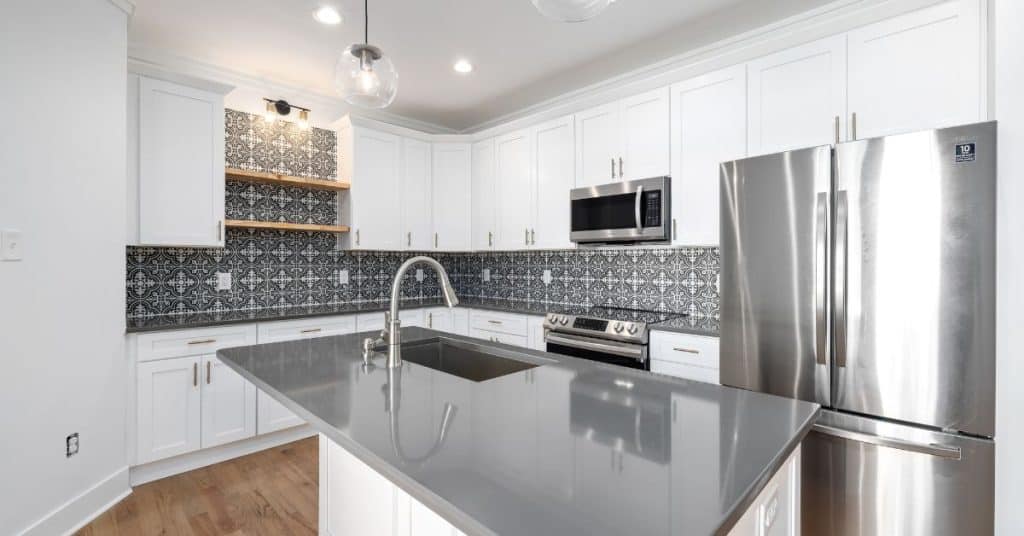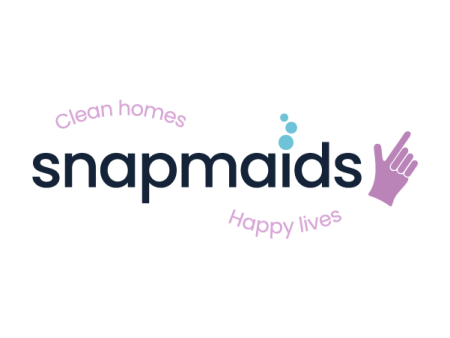Is your kitchen in need of a thorough cleaning? Don’t worry, we’ve got you covered! In this step-by-step guide, we will walk you through the process of deep cleaning your kitchen, leaving it sparkling clean and fresh. Whether you’re a seasoned cleaning pro or a beginner, this guide will provide you with all the information and tips you need to tackle this task with ease.
Why Deep Clean Your Kitchen?
Before we dive into the nitty-gritty of deep cleaning, let’s talk about why it’s important. Your kitchen is the heart of your home, where you prepare meals and spend quality time with your loved ones. Keeping it clean not only ensures a healthy environment but also enhances the overall aesthetics of your space. A deep clean helps to remove stubborn stains, grease buildup, and eliminate any lurking bacteria or odors.
The Consequences of Neglecting a Deep Clean
Neglecting to deep clean your kitchen can have serious consequences for both your health and the overall cleanliness of your space. Let’s take a closer look at what can happen if you don’t give your kitchen the attention it deserves.
Bacteria Build-Up in the Kitchen
The kitchen is a prime breeding ground for bacteria, with various surfaces and food particles providing the perfect environment for them to thrive. Here are some eye-opening statistics on the bacteria build-up that can occur in an unclean kitchen:
- Countertops: On average, kitchen countertops can harbor up to 361 bacteria per square inch, including harmful pathogens like E. coli and Salmonella. These bacteria can easily transfer to your food and cause foodborne illnesses if not properly cleaned.
- Sponges: Believe it or not, kitchen sponges can contain more bacteria than a toilet seat! Studies have found that a single square inch of a kitchen sponge can contain up to 10 million bacteria, including coliform bacteria and Staphylococcus aureus.
- Cutting Boards: Cutting boards, especially those used for raw meat, can become a breeding ground for bacteria. In fact, one study found that 18% of cutting boards tested positive for coliform bacteria, while 14% tested positive for Salmonella.
- Refrigerator: Neglecting to clean your refrigerator regularly can lead to the growth of mold, mildew, and bacteria. A study conducted by the National Sanitation Foundation found that refrigerator vegetable compartments can contain Salmonella, Listeria, and yeast and mold.
Health Risks Associated with a Dirty Kitchen
The presence of bacteria and other pathogens in an unclean kitchen can pose serious health risks. Here are some common health issues that can arise from a dirty kitchen:
- Foodborne Illnesses: When bacteria like Salmonella, E. coli, or Campylobacter contaminate your food, they can cause food poisoning and gastrointestinal infections. Symptoms may include nausea, vomiting, diarrhea, and abdominal pain.
- Allergies and Asthma: Dust, mold, and pet dander can accumulate in an unclean kitchen, triggering allergies and asthma symptoms in susceptible individuals.
- Cross-Contamination: Failure to properly clean cutting boards, utensils, and countertops can lead to cross-contamination, where bacteria from raw meat or other contaminated foods spread to ready-to-eat foods, increasing the risk of foodborne illnesses.

The Importance of Regular Deep Cleaning
Given the potential risks associated with a dirty kitchen, regular deep cleaning is crucial. By following a step-by-step deep cleaning routine, you can significantly reduce the presence of bacteria and create a healthier environment for you and your family.
Remember, a clean kitchen not only promotes good hygiene but also enhances the overall enjoyment of your cooking and dining experience. So, don’t underestimate the power of a thorough kitchen deep clean!
Step 1: Prepare Your Cleaning Supplies
Before you start cleaning, gather all the necessary supplies. Here’s a checklist to help you get started:
- All-purpose cleaner
- Degreaser
- Microfiber cloths
- Scrub brushes
- Baking soda
- White vinegar
- Rubber gloves
- Sponge
- Mop or steam cleaner
- Trash bag
Step 2: Clear, Declutter, and Organize
Begin by clearing off all the countertops, removing any appliances, utensils, or dishes. This will give you a clean slate to work with. Take this opportunity to declutter and organize your kitchen by getting rid of any expired food, empty containers, or items you no longer use. By organizing your kitchen, you’ll not only create a more visually appealing space but also make it easier to find and access your cooking essentials.
Step 3: Start with the Cabinets and Drawers
Now that your kitchen is clear, decluttered, and organized, it’s time to tackle the cabinets and drawers. Start by emptying them out and wiping down the surfaces with an all-purpose cleaner, ensuring to disinfect them thoroughly. Don’t forget to clean the handles and knobs as well, as these areas can harbor bacteria. As you sort through the items, discard anything you no longer need or use, keeping only the essentials for an organized and functional kitchen.
Step 4: Deep Clean the Appliances
Next, let’s focus on deep cleaning the appliances in your kitchen. Follow these simple steps for each appliance to ensure that it’s not only clean but also functioning optimally:
Refrigerator:
- Wipe down the exterior surfaces of the refrigerator with a damp cloth and an all-purpose cleaner.
- Remove all the shelves and drawers from the interior and wash them with warm soapy water. Rinse and dry them thoroughly before placing them back.
- Clean the interior walls and surfaces of the refrigerator using a mixture of equal parts water and vinegar. Wipe away any spills or stains.
Oven:
- Remove the oven racks and soak them in warm soapy water. Scrub them with a sponge or brush to remove any baked-on grease or food particles.
- Wipe down the interior surfaces of the oven with a mixture of baking soda and water, using a sponge or cloth. Let the mixture sit for a while to loosen any stubborn stains.
- Rinse the oven racks and place them back into the oven once they are clean.
Microwave:
- Place a microwave-safe bowl filled with water and a few slices of lemon inside the microwave. Heat it on high for a few minutes until the steam loosens any food splatters or stains.
- Carefully remove the bowl and wipe down the interior surfaces of the microwave with a damp cloth or sponge.
- Don’t forget to clean the turntable and the microwave door, as these areas can accumulate dirt and grime.
Dishwasher:
- Remove any food debris or objects from the dishwasher filter and clean it under running water.
- Wipe down the interior surfaces of the dishwasher, including the walls, racks, and door, with a damp cloth or sponge.
- Run an empty cycle with a dishwasher cleaner or a mixture of vinegar and baking soda to remove any lingering odors or buildup.
Step 5: Scrub the Sink and Countertops
The sink and countertops are often the most used areas in the kitchen and can accumulate a lot of dirt and grime. Follow these steps to effectively clean and sanitize them:
Sink:
- Sprinkle baking soda all over the sink, focusing on any stains or residue.
- Use a damp sponge or cloth to scrub the sink, working the baking soda into a paste. This will help remove stains and eliminate odors.
- Rinse the sink thoroughly with warm water to remove the baking soda residue.
- For an extra cleaning boost, cut a lemon in half and rub it all over the sink. The citric acid in the lemon will help remove any stubborn stains and leave your sink smelling fresh.
Countertops:
- Start by clearing off any items or debris from the countertops.
- Spray an all-purpose cleaner onto the countertops, covering the entire surface.
- Use a clean cloth or sponge to wipe down the countertops, paying special attention to any spills or sticky spots.
- For an eco-friendly cleaning hack, mix equal parts water and white vinegar in a spray bottle. Spray this solution onto the countertops and let it sit for a few minutes before wiping it clean. The vinegar will help disinfect and remove any lingering odors.
- Use this cleaning hack to effectively clean and sanitize your sink and countertops, leaving them fresh and sparkling clean.
Use this cleaning hack to effectively clean and sanitize your sink and countertops, leaving them fresh and sparkling clean.
Step 6: Clean the Floors
Finally, it’s time to give your kitchen floors a thorough cleaning. Follow these steps to ensure your floors are spotless:
- Start by sweeping or vacuuming the floors to remove any loose dirt, crumbs, or debris. This will prevent them from getting spread around during the cleaning process.
- Depending on the type of flooring you have, choose the appropriate cleaning technique:
- Tile or Linoleum Floors: Fill a bucket with warm water and add a few drops of mild dish soap or a floor cleaner specifically designed for your type of flooring. Dip a mop into the solution, wring out excess water, and mop the floors in a back-and-forth motion. Pay extra attention to any stains or sticky spots.
- Hardwood Floors: Avoid excessive moisture on hardwood floors, as it can cause damage. Instead, use a microfiber mop or a soft cloth slightly dampened with a hardwood floor cleaner. Gently mop the floors, following the grain of the wood.
- Laminate or Vinyl Floors: Similar to hardwood floors, laminate and vinyl floors should be cleaned with a damp mop or cloth. Use a cleaner specifically formulated for these types of flooring or a mixture of warm water and vinegar.
- Stone or Marble Floors: Stone and marble floors require special care. Use a pH-neutral stone cleaner and a soft mop or cloth to clean them. Avoid using acidic or abrasive cleaners that can damage the surface.
- Pay attention to the corners and edges of the floors, as dirt and grime tend to accumulate in these areas. Use a scrub brush or a damp cloth to clean hard-to-reach spots.
- For a deep clean, consider using a steam cleaner specifically designed for your type of flooring. Steam cleaning can effectively remove stubborn stains and sanitize the floors without the use of harsh chemicals. Follow the manufacturer’s instructions for proper usage
Use appropriate cleaning techniques for your flooring and you’ll be able to achieve clean and fresh kitchen floors that enhance the overall cleanliness of your space.
Step 7: Finishing Touches
Now that you’ve deep cleaned your kitchen, take a moment to appreciate your hard work! Put back all the items you removed earlier, making sure everything is organized and in its place. Take this opportunity to wipe down any remaining surfaces and give your kitchen a final once-over.
Congratulations! You’ve successfully deep cleaned your kitchen, leaving it fresh, tidy, and ready for your next culinary adventure. Remember, regular maintenance and cleaning will help keep your kitchen in top shape.
So, what are you waiting for? Roll up your sleeves, put on some upbeat music, and get started on your kitchen deep clean today!
About the Author
Snapmaids is your locally-owned professional house cleaning company based in Cuyahoga Falls, OH. Our teams undergo a thorough vetting process, ensuring top-notch service. From exceptional customer service to product expertise, our technicians are well-trained in every aspect. We offer a range of cleaning services to cater to your residential needs, including recurring maid services, deep house cleaning, move-in/out cleaning, and office cleaning services. If you’re in the Cuyahoga Falls area, contact us today for a complimentary home cleaning quote. Experience the difference with Snapmaids.
Find Us On Google Maps.
Quote Form
"*" indicates required fields

